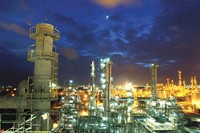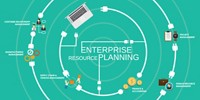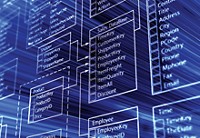Advertisement
Grab your lab coat. Let's get started
Welcome!
Welcome!
Create an account below to get 6 C&EN articles per month, receive newsletters and more - all free.
It seems this is your first time logging in online. Please enter the following information to continue.
As an ACS member you automatically get access to this site. All we need is few more details to create your reading experience.
Not you? Sign in with a different account.
Not you? Sign in with a different account.
ERROR 1
ERROR 1
ERROR 2
ERROR 2
ERROR 2
ERROR 2
ERROR 2
Password and Confirm password must match.
If you have an ACS member number, please enter it here so we can link this account to your membership. (optional)
ERROR 2
ACS values your privacy. By submitting your information, you are gaining access to C&EN and subscribing to our weekly newsletter. We use the information you provide to make your reading experience better, and we will never sell your data to third party members.
Business
Peripheral Advances
Chemical companies are experimenting with cutting-edge add-ons to their information technology hubs
by Rick Mullin
September 12, 2011
| A version of this story appeared in
Volume 89, Issue 37

The chemical industry is regarded as a “late adopter” when it comes to information technology (IT). The fact that 97 of the world’s top 100 chemical companies use the same enterprise resource planning (ERP) system—a statistic provided by SAP, the software firm that sells the system—suggests a kind of herd mentality that may be at the root of a wait-and-see attitude toward change.

Although most chemical companies have gravitated toward SAP’s latest generation of Internet-based business software in recent years, little else has changed regarding centralized computer systems for global companies.
But a lot has changed elsewhere in the business software arena over the past few years. With the growth of cloud computing, mobile devices, and third-party-hosted business software, chemical companies are coming to grips with the fact that much of the software running their big IT systems has become a commodity that can be outsourced. The option of getting additional applications without actually purchasing software or hardware is attractive, especially given IT budget constraints and the imperative to grow businesses coming out of a recession.
Chemical industry chief information officers (CIOs) agree that IT is evolving away from the ERP monolith. Experiments are under way in the industry to determine where these alternatives mesh with the installed IT base and where new options can create value and support growth.
“In the chemical industry, the trend until five years ago was toward the single-instance, rigid ERP platform,” says Koenraad Schelfaut, head of chemical industry technology business services at consulting firm Accenture. The understanding was that a unified system would harmonize global operations, he says. “Five years ago, consultants told clients the same thing—that the world is globalizing and that everybody needs to be on the same system.”
The globalization process itself, however, began exposing the limitations of monolithic IT, Schelfaut says. Merging IT systems after acquisitions, for example, proved arduous and costly for chemical firms. And the cyclical nature of chemical markets required regular rightsizing of IT networks and adaptation to new work processes. The ability to change systems by purchasing software as a service rather than rewiring an installed network suggests an obvious advantage.
As a result, companies are revisiting IT strategies, Schelfaut says. “They are asking, ‘How do I find the ideal balance between simplified, standard harmonized architecture and processes on the one hand, and flexible, economic IT for individual business units on the other?’ ”
The movement, he says, is ultimately toward cloud computing, a strategy of using an outside service provider’s data processing infrastructure rather than running computer servers on premises. Although the idea of outsourcing data processing initially met with resistance, chemical firms are warming to the idea in principle, partly because they have to.
“I don’t think there is any chemical company today that doubts that cloud computing is applicable to its business,” Schelfaut says. “They are all aware that it will happen. It is just a matter of when and at what level.”
According to Don Mahoney, vice president of SAP’s chemical industry business unit, belt-tightening in the industry means increased investment in software as a service. The software giant has launched a program it calls Business ByDesign through which it offers software hosted on its servers and hardware. SAP has also developed a mobile computing product based on technology it gained with the 2010 acquisition of Sybase. Called Sybase Unwired Platform (SUP), it allows companies to manage corporate data on personal computing devices such as iPads and cell phones.
New IT offerings from SAP follow an overhaul of the company’s workhorse R/3 system several years ago with its NetWeaver ERP architecture—an Internet backbone to which users add targeted software products. SAP, which has a long track record of working with third-party software providers, allows vendors of specialized software in areas such as sales force management and human resources to link to NetWeaver. The company is also working with partners to cater Business ByDesign to specific industries, according to Mahoney. Accenture is a chemical industry partner, he adds.
Dow Chemical is linking the European operations of its Safechem subsidiary to its corporate ERP system via Business ByDesign. The firm is investigating other alternatives to centralized computing as well. For example, it is accessing Microsoft’s SharePoint via the software giant’s Business Productivity Online Suite, a software as a service offering, according to Dow CIO David E. Kepler. “The trend is real and it’s moving rapidly,” Kepler says. He emphasizes, however, that Dow is limiting its use of software services to generic business applications.
Dow is famous in IT circles for holding out on installing SAP’s R/3 ERP system, instead maintaining an earlier version of the software. Recently, Dow embarked on a multi-million-dollar conversion to NetWeaver, in essence skipping a generation of SAP products. The NetWeaver project is still under way, Kepler says, and whatever Dow does in cloud computing, software as a service, or mobile devices is unlikely to displace the core, in-house ERP.
DuPont can claim that it has run its ERP system on a cloud since the 1990s when the firm outsourced its entire IT operation to Computer Sciences Corp., according to Michael J. Stoko III, DuPont’s chief technology officer for IT. Since then, CSC has managed DuPont’s ERP infrastructure from a data center it took over when it landed the job. Stoko compares this with a private cloud, one in which the infrastructure serves one client company.
“There are a lot of definitions of cloud computing,” Stoko says. “I see people moving to private-hosted clouds. Where cloud computing needs to go is to a multitenant service provider where you share those assets with other companies. But in most cases the technology is not ready for that.” Methods of protecting intellectual property still need to be developed, he adds.
DuPont is nonetheless preparing for the future by determining which of its ERP functions could run on a multitenant cloud and which should stay on a private one. “We will end up with a smaller internal ERP system, and we will use software as a service as it becomes available and where the technology is ready,” Stoko says. DuPont is already using customer relationship management software from Salesforce.com that is hosted on a multitenant server.
Dow Corning, an R/3 user, is experimenting with new IT options, according to CIO Kristy Folkwein. But the company is taking care not to offset the value gained by running a central IT network.
Dow Corning has embarked on two software-as-a-service projects. Although she declines to name the providers, Folkwein says the projects impact human resources and financial management. “I can clearly see that these are going to be important to us,” she says. “But we are being cautious. We have a lot of intellectual property to protect, and we have security concerns.” The company also has an IT infrastructure worth between $50 million and $100 million. “The last thing I want to do is start having disconnections in that system and lose the value we’ve gotten out of it.”
In addition, Dow Corning is experimenting with mobile devices through a program called Windows to the World, in which iPads become mobile user stations for the ERP system. And the company has completed a study of how social networking is being used internally, hoping to better integrate it into day-to-day activities. Yet Folkwein views all of these projects as additive to the hardwired ERP system, and each will have to prove itself. “This isn’t a cool tool thing,” she says. “It’s about how we can bring value to Dow Corning.”
At Novus International, the St. Louis-based animal health firm owned by Mitsui & Co. and Nippon Soda, there is a constant trawl for IT alternatives, according to David Ploch, director of emerging technologies. A guiding principle in IT strategy, Ploch says, is cost control as new technology is brought on-line.
The company, which was spun off from Monsanto about 20 years ago, has grown from 250 employees in 2008 to nearly 1,000 today, Ploch says, and IT development reflects the rapid growth. Novus recently replaced a Baan ERP system with SAP’s R/3. The new system is hosted by the IT services firm Atos at its facility in Arlington, Texas.
Atos is not taking over IT operations and development, Ploch emphasizes. Rather, Atos is merely hosting the hardware that runs R/3, thus eliminating the cost to Novus of installing and maintaining servers. “We decided that we didn’t want to run the system ourselves,” he says. “We didn’t want to make the capital investment necessary to bring up the infrastructure or hire the people it would take to do that.”
Novus is using SAP’s SUP to coordinate mobile computing devices with the R/3 system, Ploch says, noting the myriad processes within an ERP system that can potentially connect with handheld equipment in the field. “A salesperson can have instant access to information in the field,” he says. “Someone in the plant can take a picture of something and get that picture into the system quickly. It impacts warehouse facilities, allowing bar coding to replace clipboards. Live information can go immediately into the system.”
Given the rapid pace of change in both global chemical businesses and the IT that supports them, Accenture’s Schelfaut says, companies are trying to balance the need for new IT functionality with keeping installed systems intact and expenditures in check. The proliferation of mobile computing in the workplace means that much of the development will involve targeted IT applications offered as a service.
“If you talk to businesspeople in chemicals, they don’t really care about the cost of IT—unless they are the CIO,” Schelfaut says. “The vice president of sales only wants technology that fits his needs.” Providing that technology within budget, he says, will likely fuel the development of alternatives to traditional ERP systems. “IT needs to be flexible and agile to deal with the speed of change.”





Join the conversation
Contact the reporter
Submit a Letter to the Editor for publication
Engage with us on Twitter